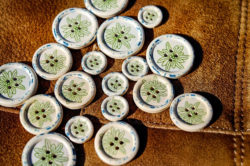Source of article The Jury Room - Keene Trial Consulting.
 Here’s another combination post offering multiple tidbits for you to stay up-to-date on new research and publications that have emerged on things you need to know. We tend to publish these when we’ve read a whole lot more than we can blog about and want to make sure you don’t miss the information.
Here’s another combination post offering multiple tidbits for you to stay up-to-date on new research and publications that have emerged on things you need to know. We tend to publish these when we’ve read a whole lot more than we can blog about and want to make sure you don’t miss the information.
Juror questions during trial and the prevalence of electronic and social media research
The National Center on State Courts just published a study authored by a judge in the Pennsylvania Lawyer on whether allowing jurors to ask questions during trial will help resolve issues of electronic and social media research during trial. The judge-author suggests the judicial directives to not conduct any form of research (the instructions usually itemize various forms of social media as examples of “what not to do”) do not stop the research from happening—it simply makes the research surreptitious rather than public. Since this publication is in the Pennsylvania Lawyer, they focus on Pennsylvania jury instructions but also discuss how other venues have used (and controlled) juror questions during trial. The article offers suggestions developed in the subcommittee on civil jury instructions. It is well worth a read if you have questions about the practice of allowing juror questions.
We should question alibis and the weight we place on them during jury deliberations
Given all the concerns about the accuracy of eye-witness testimony, it only makes sense we should also closely examine alibis and whether we simply accept them as true. A new article in Pacific Standard magazine says we need to pay attention to alibis as new research is telling us that accuracy of alibis resemble the vagaries of faulty eye-witness testimony. According to the new research, we tend not to remember mundane events (like where we were on August 17, 2009). The authors of the study described say that the wrong people can end up in jail due to alibi inconsistency and eyewitness mis-identification.
The curious impact of donning a police uniform
New research published in Frontiers in Psychology tells us that putting on a police uniform automatically affects how we see others and creates a bias against those we consider of lower social status. Essentially, say the researchers, the uniform itself causes shifts (likely due to the authority communicated by the uniform) resulting in judgment of those considered to be lower status (i.e., in this study those wearing hoodies were identified as having a lower social status). The researchers think it possible that police officers (who put on their uniforms) may perceive threat where none exists.
Identifying lies with fMRI machines
We’ve written about identifying deception using fMRIs frequently at this blog and here’s a four-page “knowledge brief” from the MacArthur Foundation Research Network on Law and Neuroscience. You can also download this summary at SSRN. This is a terrific (and brief) summary on everything you need to know about what fMRI machines can tell us about deception and what they cannot tell us about deception. You could think of this as a primer on fMRIs and how they work (and don’t work) as well as a guide to deposition testimony of an expert witness touting the deception-identifying abilities of the machine. This resource is very worth your time.
Ciro Civile, & Sukhvinder S. Obhi (2017). Students Wearing Police Uniforms Exhibit Biased Attention toward Individuals Wearing Hoodies. Frontiers in Psychology, (February 6,)
